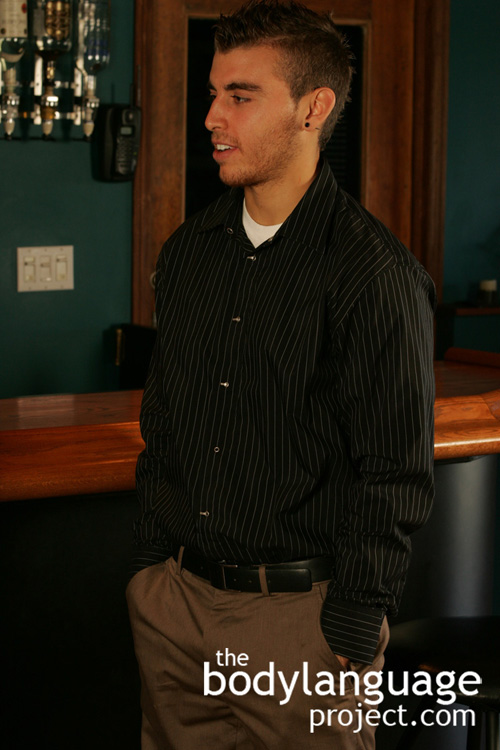
Closed body postures, like hands hiding in pockets, indicate insecurity which we subconsciously associate with lying.
Closed body positions, as we know, give off bad signals in general. When in a high pressure situation, closing the body off in any way may lead people to think that you have something to hide. Tucking the chin in, pulling the arms closer to the body, crossing the legs, turning the body away, and taking on a less threatening profile are all attributed to lying. Another less obvious clue to being closed-off, is to subconsciously place an object between the liar and interrogator, such as a book, brief case, or any other “security-blanket.”
As we all know of course, closed body positions like the majority of the signals associated with liars is in fact due to the stress, fear and hence nervousness of the interrogation. When “under attack” we close up our bodies to make it appear smaller and less significant to draw less attention to it, which is a way to protect our bodies in case the interrogation escalates into a physical attack. While most cultures prohibit physical force during everyday encounters, we still have the mental hardwiring that programs us to foresee physical violence, never mind the fact that a verbal threat is just as embarrassing and visceral as any physical confrontation. Threatening language puts our minds at risk to long term emotional damage, no different than being threatened by physical conflict. In our daily lives accusatory situations, verbal threats, and scolding, ranks near the top as far as the sorts of harm we endure throughout our lives. This is why we see our bodies react through body language to emotional threats, as well as to the possibility of being uncovered as cheats and liars.
